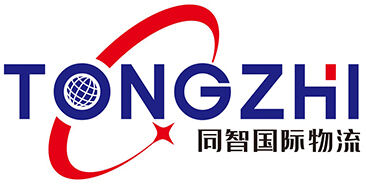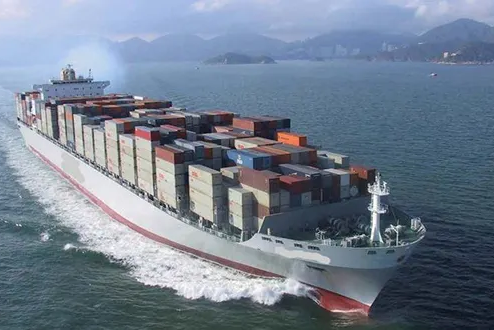컨테이너 운송은 세계 무역의 핵심으로, 전 세계적으로 상품을 효율적이고 안전하게 이동시킵니다. 국제 무역에 대한 지속적으로 증가하는 수요로 인해 기업들은 물류 운영을 최적화하기 위해 컨테이너 운송의 세부 사항을 이해해야 합니다. 본 문서에서는 컨테이너 운송에서 효율성을 극대화하기 위한 최고의 실천 방법과 주요 고려 사항을 탐구합니다.
컨테이너 운송 이해하기
컨테이너 운송은 큰 표준화된 컨테이너에 물품을 실어 나르는 것을 포함합니다. 이러한 컨테이너는 다양한 크기로 제공되며, 가장 일반적인 것은 20피트와 40피트 컨테이너입니다. 표준화된 시스템은 선박, 트럭, 기차 간의 원활한 이동을 가능하게 하여 매우 유연하고 효율적인 운송 방식을 제공합니다.
컨테이너 운송의 주요 장점
효율성: 컨테이너는 취급과 쌓기가 용이하도록 설계되어 있어 항구에서의 적재 및 하역 과정을 가속화합니다. 이 효율성은 더 빠른 운송 시간과 비용 절감으로 이어집니다.
보안: 컨테이너에 실린 화물은 손상과 도난에 덜 취약합니다. 컨테이너의 견고한 구조는 자연 요소와 잠재적인 절도로부터 우수한 보호를 제공합니다.
비용 효율성: 컨테이너 운송은 특히 장거리 국제 운송의 경우 다른 운송 방식보다 일반적으로 더 경제적입니다. 하나의 컨테이너에 여러 화물을 합산하여 운송할 수 있는 능력은 추가로 비용을 줄입니다.
다용도: 컨테이너는 원자재와 기계에서 신선식품과 완제품에 이르기까지 다양한 상품을 운반할 수 있습니다. 특수 컨테이너, 예를 들어 냉동 컨테이너(리퍼)는 온도 조절과 같은 특정 요구 사항을 충족시킵니다.
컨테이너 선적 최고의 방법들
적합한 컨테이너 유형 선택하기
화물의 안전하고 효율적인 운송을 보장하기 위해 적절한 컨테이너 유형을 선택하는 것이 중요합니다. 표준 드라이 컨테이너는 대부분의 화물에 적합하지만, 기업은 특정 필요에 따라 특수 컨테이너를 고려해야 합니다:
냉장 컨테이너 (리퍼): 온도 조절이 필요한 품목에 사용됩니다.
오픈탑 컨테이너: 표준 컨테이너에 들어가지 않는 초대형 화물을 위한 용도입니다.
플랫랙 컨테이너: 기계나 차량과 같은 무겁고 덩치 큰 물품에 적합합니다.
컨테이너 활용도 최적화하기
컨테이너 내부의 사용 가능한 공간을 최대한 활용하면 선적 비용을 크게 절감할 수 있습니다. 기업은 이를 위해 다음을 고려해야 합니다:
상품을 적절히 포장하고 쌓으세요: 운송 중 이동을 방지하기 위해 상품이 꽉 차고 안전하게 포장되어야 합니다.
팔레트와 스키드 사용: 용이한 취급과 공간의 효율적인 사용을 촉진합니다.
무게 분배 균형 유지: 안정성을 유지하고 손상을 방지하기 위해 무게를 고르게 분배하세요.
고급 추적 시스템 구현
화물의 실시간 추적 및 모니터링은 배송 과정 전반에서 중요한 통찰력을 제공하고 가시성을 높입니다. 고급 추적 시스템은 다음을 제공합니다:
실시간 위치 업데이트: 기업들이 화물의 위치와 상태에 대해 알 수 있도록 합니다.
상태 모니터링: 온도에 민감한 상품이 요구 사항 범위 내에 있는지 확인합니다.
예측 분석: 잠재적인 지연을 예측하고 더 빠른 배송을 위한 최적 경로를 설정합니다.
규제 준수 보장
국제 운송 규정 준수는 지연과 벌금을 피하기 위해 필수적입니다. 기업들은 다음과 같이 해야 합니다:
무역 규정에 대한 정보를 유지하십시오: 각 목적지에 대한 수출입 법률 및 관세 요건을 최신 상태로 유지하십시오.
정확한 문서 준비: 송장, 원산지 증명서, 관세 신고서와 같은 모든 필요한 문서가 올바르게 작성되어 제시간에 제출되었는지 확인하십시오.
경험 있는 관세 대리인과 협력하십시오: 원활한 통관 절차를 지원하고 준수 문제의 위험을 최소화하십시오.
향상된 효율성을 위한 기술 활용
기술은 컨테이너 선박 운송 작업을 최적화하는 데 중요한 역할을 합니다. 기업들은 다음을 채택해야 합니다:
운송 관리 소프트웨어: 예약, 문서 처리, 추적 프로세스를 간소화하십시오.
자동화된 화물 취급 시스템: 항구에서의 적재 및 하역 작업을 가속화하십시오.
블록체인 기술: 거래 및 이동에 대한 변경 불가능한 기록을 제공하여 공급망의 투명성과 보안을 강화하십시오.
컨테이너 운송의 주요 고려 사항
비용 관리
운송 비용은 기업의 순이익에 큰 영향을 미칠 수 있습니다. 비용 관리를 위한 주요 전략에는 다음이 포함됩니다:
화물 통합: 규모의 경제를 활용하기 위해 여러 화물을 하나의 컨테이너로 결합하십시오.
계약 협상: 선사 및 화물 대행인과 유리한 요금 및 조건을 확보하십시오.
노선 최적화: 이동 시간을 줄이고 연료 소비를 줄이기 위해 가장 효율적이고 비용 효과적인 노선을 선택하십시오.
위험 관리
컨테이너 운송과 관련된 리스크를 관리는 상품의 안전하고 적시에 도착을 보장하는 데 필수적입니다. 다음 사항을 고려하십시오:
보험 가입: 손상, 도난 또는 지연으로 인한 잠재적인
손실로부터 보호하십시오.
대응 계획 수립: 항만 파업이나 자연 재해와 같은 예상치 못한 중단 사태에 대비하여 계획을 수립하십시오.
정기 감사: 운송 프로세스 및 파트너에 대한 감사를 실시하여 리스크를 식별하고 완화하십시오.
지속가능성 실천
지속 가능성은 글로벌 물류에서 점점 더 중요해지고 있습니다. 기업은 다음과 같은 친환경 실천 방법을 채택할 수 있습니다:
연료 효율성이 높은 선박 사용: 현대적이고 연료 효율적인 선박을 사용하는 선사들을 선택하여 탄소 배출을 줄이세요.
녹색 포장 솔루션 도입: 환경 영향을 최소화하기 위해 재활용 가능하고 분해 가능한 포장재를 사용하세요.
탄소 배출 저감: 선박 운송 활동의 환경적 영향을 중화하기 위해 탄소 오프셋 프로그램에 참여하세요.
결론
컨테이너 선박 운송은 국제 무역의 중요한 구성 요소로, 효율성, 안전성 및 비용 효과성을 제공합니다. 적절한 컨테이너 유형 선택, 컨테이너 활용도 최적화, 고급 추적 시스템 활용, 규제 준수 보장 및 기술 채택과 같은 최선의 방법을 구현함으로써 기업은 컨테이너 운송의 이점을 극대화할 수 있습니다. 또한 비용 관리, 리스크 완화 및 지속 가능성 실천은 글로벌 시장에서 경쟁 우위를 유지하기 위한 핵심 요소입니다.







































